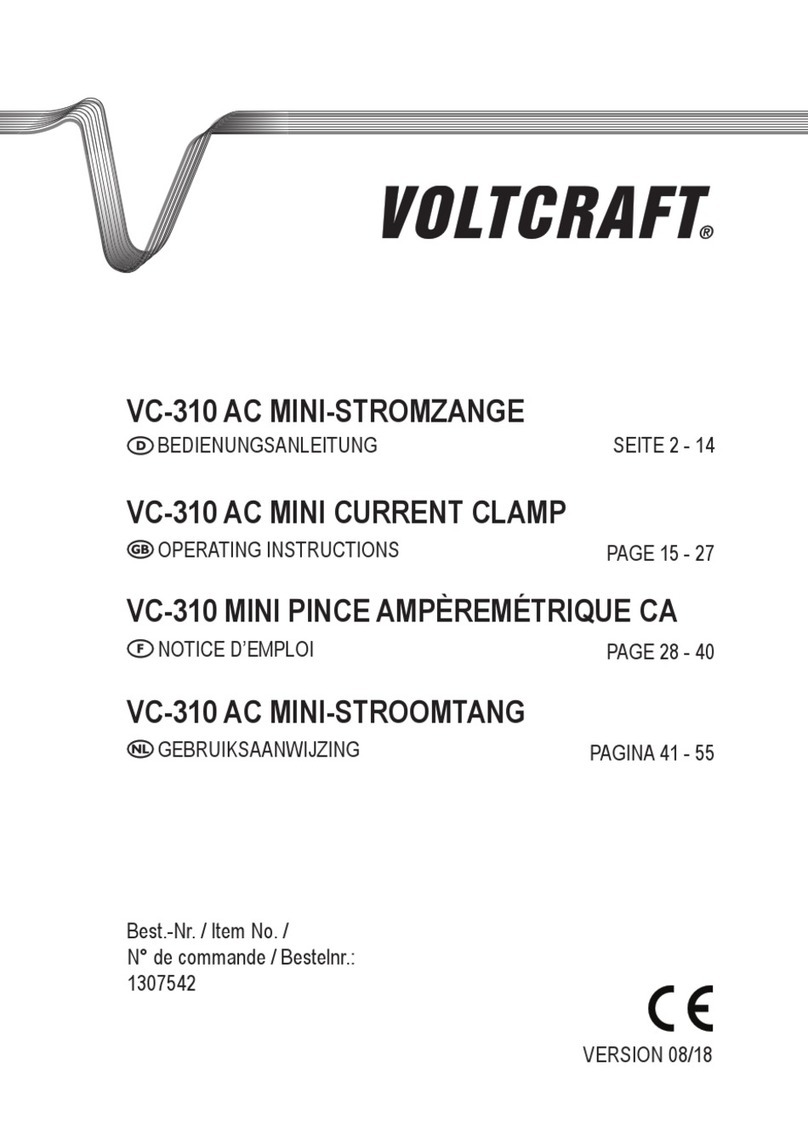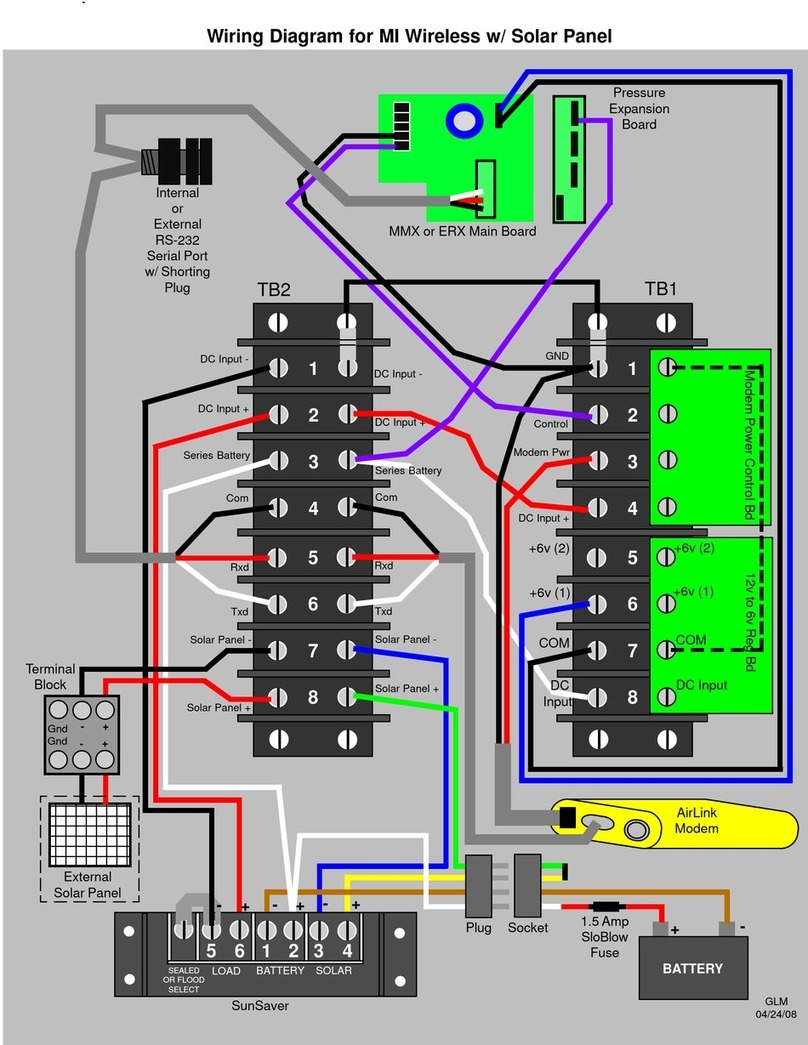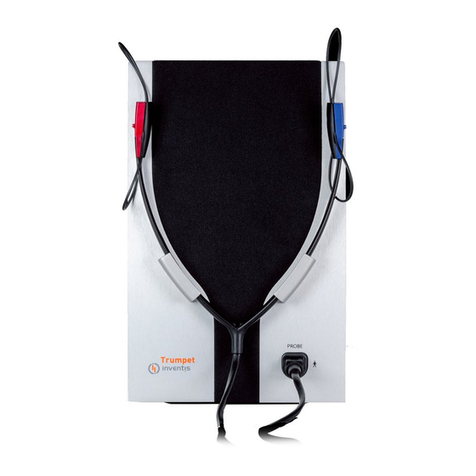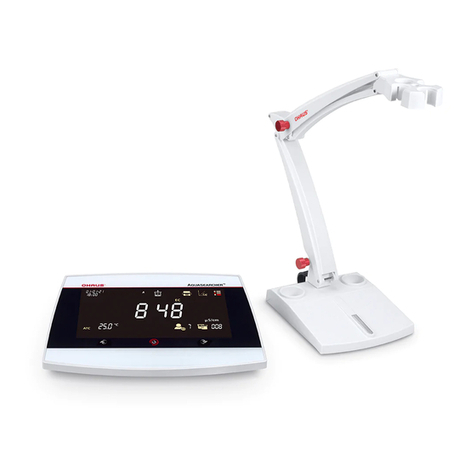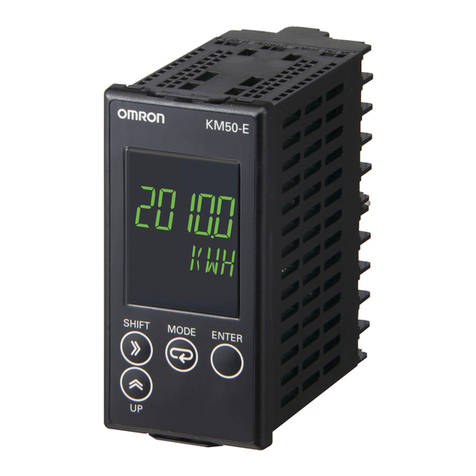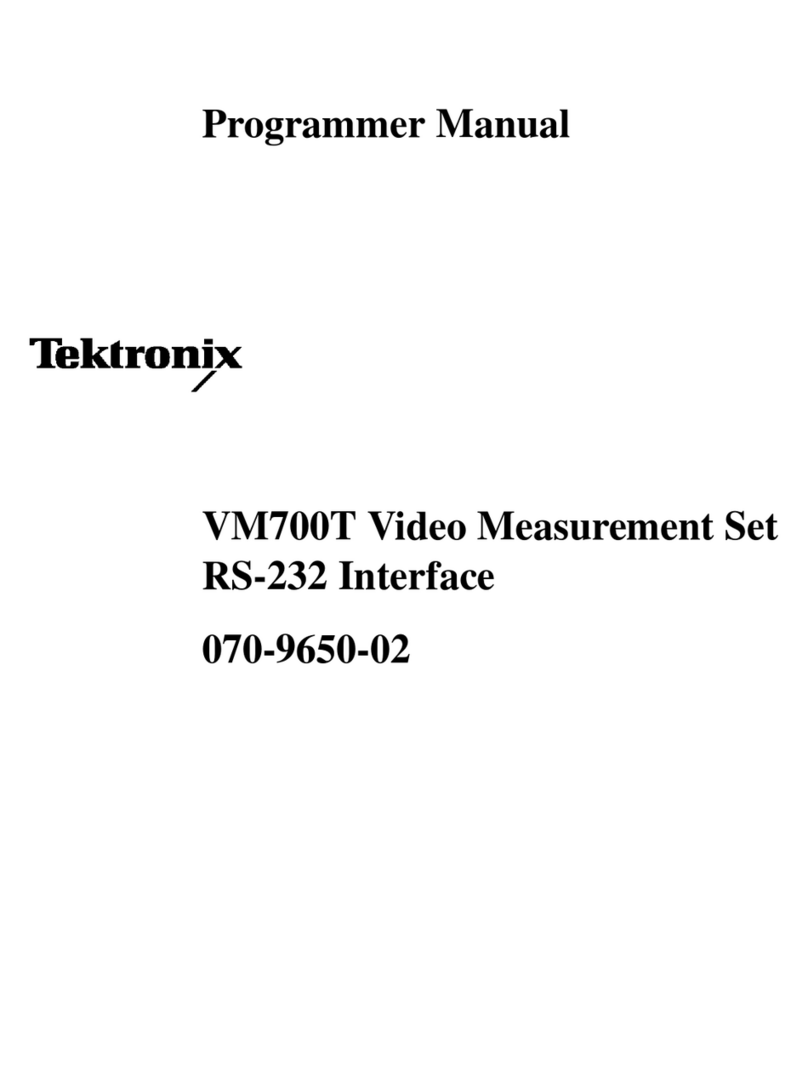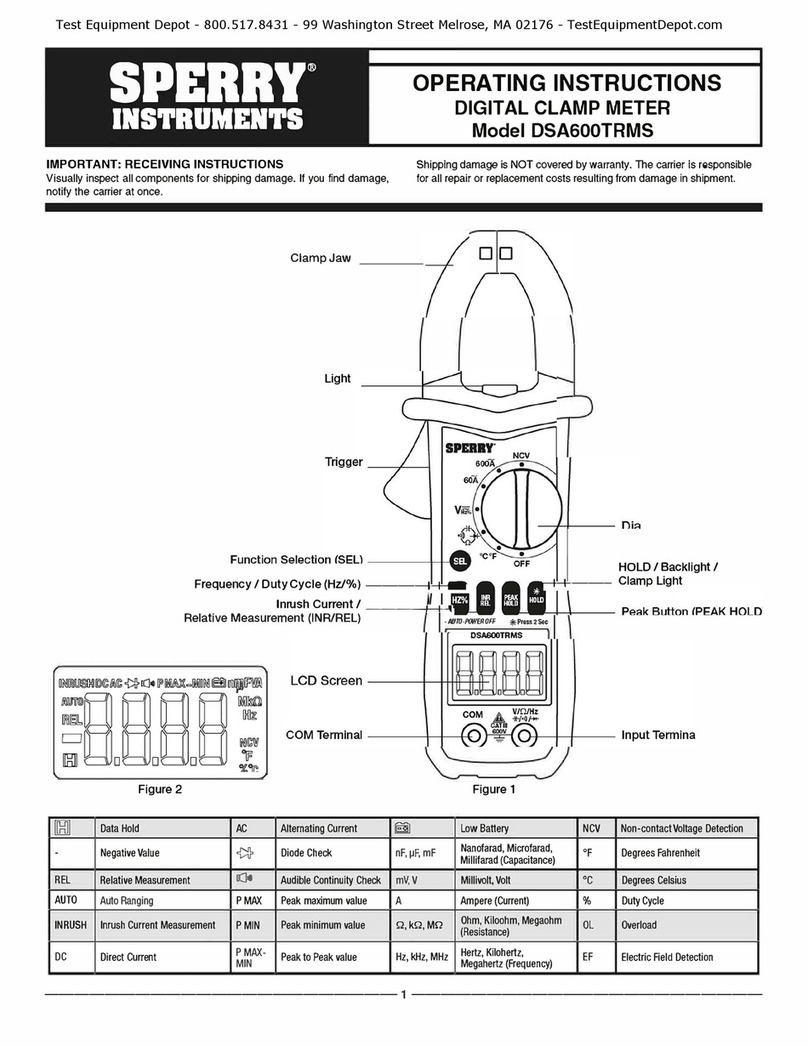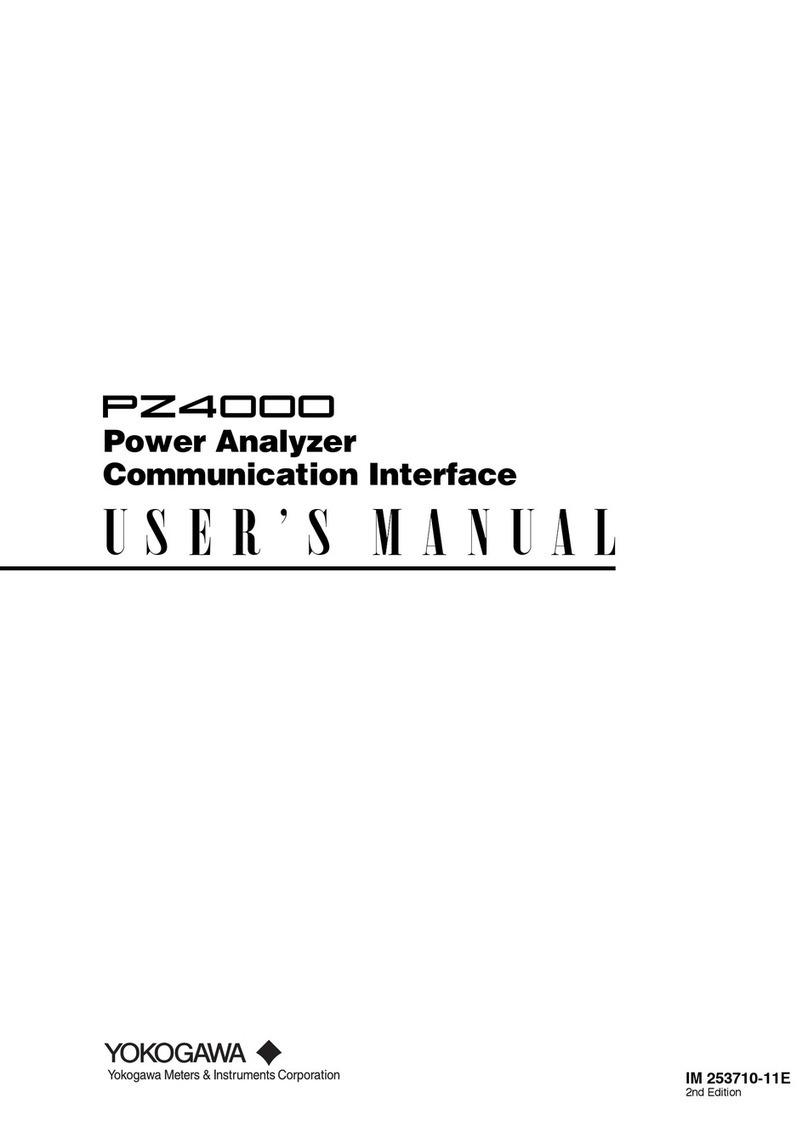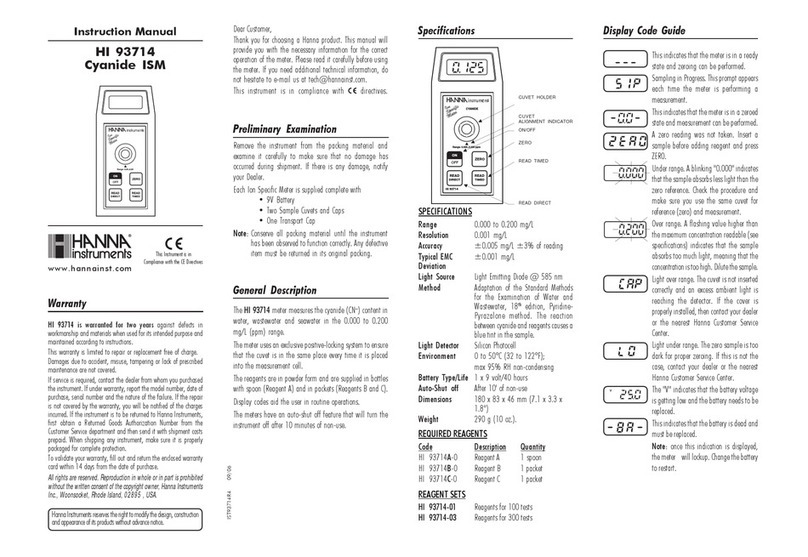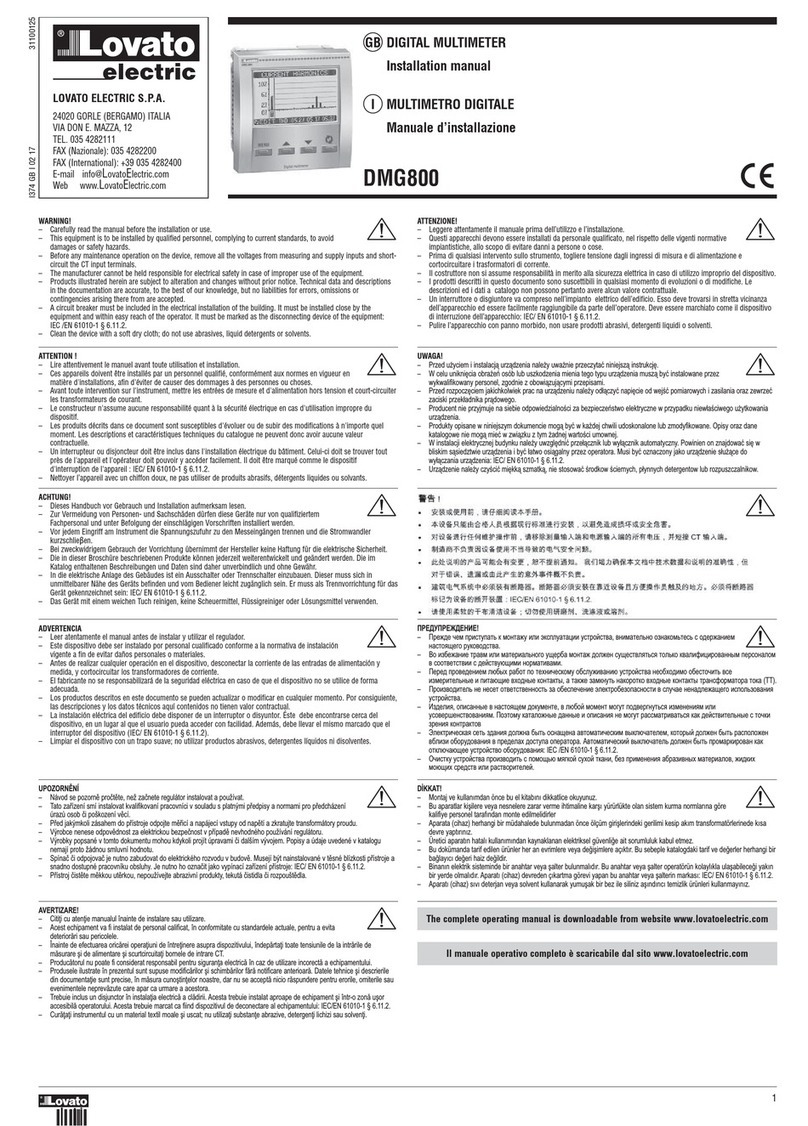EMERGENT EES-501 User manual

EES-501 Ultrasonic Flowmeter
Reversion:3.0.1Page1of51
Ultrasonic Flowmeter Instruction Manual
Model: EES-501
Update
Record
Revision
3.0.1
Date 12 . 2021

EES-501 Ultrasonic Flowmeter
Reversion:3.0.1Page2of51
Notice
Thankyou forchoosing the EES-501 Ultrasonic Flowmeterand Analyzerwith ARMchip and low-voltage
wide-pulse sending technology.
Thisinstruction manualcontainsimportantinformation. Pleaseread it carefullybefore operation the flowmeter
thusavoiding damage to the flowmeterfromimproperuse.
Thisinstruction manualwill advise howto use the flowmeterstep-by-step manner, including productcomponent
description, installation, wiring and quick setupetc. to make it easierto operate.
Aworking knowledgeofthemenu settingswillassistyou in understanding the flowmeters powerfuland output
function.
Warning
Maycause injury.
Attention
Maydamage the flowmeter.
Some ofthe instructionsmaybe differentfromthe flowmeterand analyzeryou havepurchased. Thatdependson
the configuration requirements. It also maybe due to changesin productdesign, modification and upgrade .You
will find the flowmeterdisplayinterface intuitive and easyto understand and it shall prevail when there isno
indication ofthe instructions.Please referto the version numberand the appendix formore information.

EES-501 Ultrasonic Flowmeter
Reversion:3.0.1Page3of51
ProductComponents
Inspection should be made before installing the flowmeter. Check to see if the spareparts are in accordance with
the packing list. Make sure thatthere isno damage to theenclosure due to loose screworwiresorotherdamage
thatmayhave occurred during transportation. Anyquestions, please contactyourrepresentative assoon as
possible.

EES-501 Ultrasonic Flowmeter
Reversion:3.0.1Page4of51
Content
1Transmitter Installationand Connection.................................................................................6
1.1 Power SupplyConnections................................................................................................................................6
1.1.1 TypeofPower Supply...............................................................................................................................6
1.1.2 Wiring........................................................................................................................................................6
1.1.3 Data OutputWiring ...................................................................................................................................7
1.2 Powering On......................................................................................................................................................8
1.3 KeypadFunctions...............................................................................................................................................8
1.4 KeypadOperation..............................................................................................................................................9
1.5 Flowmeter Menu Descriptions.........................................................................................................................10
2TheQuickSetupDescription...................................................................................................11
2.1 Double FunctionKeysMenuDescription........................................................................................................11
2.2 For example......................................................................................................................................................15
2.3 MeasurementSite Selection.............................................................................................................................17
3Transducer Installation............................................................................................................19
3.1 InstallingtheTransducer..................................................................................................................................19
3.1.1 Transducer Mounting Methods................................................................................................................19
3.1.2 VMethod.................................................................................................................................................19
3.1.3 ZMethod .................................................................................................................................................19
3.1.4 NMethod (notcommonlyused)..............................................................................................................20
3.2 Transducer InstallationandFixing...................................................................................................................20
3.3 Transducer Mounting Inspection......................................................................................................................20
3.3.1 Signal Strength.........................................................................................................................................21
3.3.2 Signal Quality(Qvalue)..........................................................................................................................21
3.3.3 Total TimeandDelta Time......................................................................................................................21
3.3.4 Transit TimeRatio...................................................................................................................................21
3.3.5 Warnings..................................................................................................................................................21
4Operating Instructions.............................................................................................................23
4.1 SystemNormal Identification..........................................................................................................................23
4.2 LowFlowCutoff Value...................................................................................................................................23
4.3 Zero Settings....................................................................................................................................................23
4.4 Scale Factor......................................................................................................................................................23
4.5 4~20mACurrentLoop Output.......................................................................................................................23
4.6 4~20mAAnalogOutputCalibration................................................................................................................24
4.7 TFCard Operation...........................................................................................................................................24
4.7.1 Specifications...........................................................................................................................................24
4.7.2 ReadingtheTFData Offline....................................................................................................................25
4.7.3 TFCard StorageOperationGuide...........................................................................................................25

EES-501 Ultrasonic Flowmeter
Reversion:3.0.1Page5of51
4.8 ESN..................................................................................................................................................................26
5WindowDisplay Explanations.................................................................................................27
5.1 WindowDisplayCodes....................................................................................................................................27
5.2 DisplayExplanation.........................................................................................................................................28
6ErrorDiagnoses........................................................................................................................46
6.1 Table 1. Error CodesandSolutions(during operation)....................................................................................46
6.2 FrequentlyAskedQuestionsandAnswers.......................................................................................................47
7Product Overview.....................................................................................................................48
7.1 Introduction......................................................................................................................................................48
7.2 FeaturesofFlowmeter......................................................................................................................................48
7.3 TheoryofOperation.........................................................................................................................................48
7.4 Applications.....................................................................................................................................................49
7.5 Specifications...................................................................................................................................................49
8Appendix 1 -FlowApplicationData.......................................................................................50
8.1 SoundVelocityandViscosityfor FluidsCommonlyUsed.............................................................................50
8.2 SoundVelocityfor VariousMaterialsCommonlyUsed..................................................................................50
8.3 SoundVelocityInWater (1 atm)AtDifferentTemperatures..........................................................................51
Update Information:
__________________________________________________________________________________________
__________________________________________________________________________________________
__________________________________________________________________________________________
__________________________________________________________________________________________

EES-501 Ultrasonic Flowmeter
Reversion:3.0.1Page6of51
1TransmitterInstallation and Connection
1.1 PowerSupplyConnections
1.1.1 TypeofPower Supply
The factoryoffers one rechargeable 11.1VLithiumbatteryand matching batterycharger.
1.1.2 Wiring
Openthe hinged top coverofthe electronics. The wiring ports ofthe EES-501, fromleft to right, are asfollows:
Downstreamtransducerconnector, upstreamtransducerconnector,SDcard slot, powerswitch, data output
connectorand batteryrecharge port.
Warning
Wiring connectionsshould be made when powerisoff.

EES-501 Ultrasonic Flowmeter
Reversion:3.0.1Page7of51
1.1.3 DataOutputWiring
Data outputwiring asshownbelow: Firstconnectthe 8-pin plug with the data outputport; afterthese connectthe
ABwith the RS485 Communication, finallygetthe Iwith the 4 ~20mAcurrentoutput.
OCT+OCT- RL1RL2
Dataoutputportto
thetransmitter(8-pin)
ABI+ I-
RS485and4~20mA
Output

EES-501 Ultrasonic Flowmeter
Reversion:3.0.1Page8of51
1.2 PoweringOn
When the meterispowered on, it will start with the following screen, the Version NumberVer:1.01 andthe Serial
numberS/N:v5200355 will be shown atthe bottomrightcorner.
Ifitisthe firsttime ofuse oran installation on a newsite,the customerneedsto inputthe newinstallation site
parameters. Anyparameters which are setbythe userwillbe saved permanentlyuntil theyare changed bythe
user.
When the usermodifiesthe parameters orremovesthe transducers, the meterwill recalculate automatically, and
operate normallywith the newlysetparameters.
1.3 KeypadFunctions
Followthese guidelineswhen using the flowmeterkeypad:
~and :Inputnumbers.
:Backspace ordelete characters to the left.
and :Return to the lastMenu or
open the nextMenu. Actsas"+"and "-"are used to
enternumbers.
:Selecta Menu. Press thiskeyfirst, inputa
two-digit Menu numberand the selected Menudata
will be displayed. Forexample, in orderto inputa
pipe outside diameter, press
where "11"isthe windowIDto displaythe
pipe outside diameter.
:Enter/Confirm.
:Enter/Exit SDcard storage interface.
are shortcutstothe windowsforFlowRate,
Velocity, SignalQuality, POS Totalizer, waveform, and Diagnosis.

EES-501 Ultrasonic Flowmeter
Reversion:3.0.1Page9of51
1.4 KeypadOperation
The instrumentsetup and measurementdisplaysare subdivided into more than 100 independentMenus.The
operatorcan inputparameters, modifysettingsordisplaymeasurementresultsby"visiting"a specific Menu.
These Menusarearranged by 2-digit serialnumbers from00~99, then using +0, +1, etc. Each Menu IDcode hasa
defined meaning. Forexample, Menu 11 indicatesthe pipe outside diameter, while Menu 25 indicatesthe
mounting spacing between the transducers.EachMenu will be discussed laterin thismanual.
1.To visit a specific Menu, press the keyatanytime exceptthe SDCard Storage Interface, then inputthe
2-digit Menu IDcode and thatMenu will be displayed. Forexample, to inputorcheck the pipe outside diameter,
press the keysforwindowIDcode 11.
Anothermethod to visit a particularMenu isto press the , and keysto scroll through the
Menus. Forexample, if the currentMenu is30, press key to enterMenu 31, press the button
again to enterMenu 30.
The Menusaredivided into three types:1)Data Type, such asM11, M12;2)Selection Type, such asM14;3)
DisplayType, such asM00, M01.
Visit Data Type Menusto check specific parameters.
Ifparameterchange isneeded, justpress
first, then inputthe valuesand press to
confirm.
Example 1:To enterapipe outerdiameterof
200mm, the procedure isasfollows:
Press to enterMenu11 (the
numericalvalue displayed currentlyisthe previous
pipe outerdiameter). Nowpress the key. The
symbol">"and a flashing cursorisdisplayed on the
screen.The newvalue can nowbe entered.
Visit Selection Type Menusto check the related
options. Ifneed to modifyit,press first to
enterthe revised selection when the symbol">"is
displayed on the screen;orinputnumbers directlyto
selectthe option when the symbol">"and a flashing
cursorare displayed.
Example 2:Ifthe pipe materialis"Carbon Steel",
press to enterMenu 14,
then press to modifythe option. Then,
select"0. Carbon Steel"fromthe drop-down Menu
(you maycycle through the choicesbypressing the
and keys)and then press
to confirmthe selection.

EES-501 Ultrasonic Flowmeter
Reversion:3.0.1Page10of51
1.5 FlowmeterMenu Descriptions
These windowsareassigned asfollows:
00~09DisplayMenus:Usedtodisplay flowrate, positive total,negativetotal,nettotal, velocity,date
&timeetc.
10~29Setup Menus:Used to enterpipe outerdiameter, pipe wall thickness, fluid type, transducer
type, transducermounting and spacing, etc.
30~38Flowunitsselection and totalizeroperating Menus:Used to selectunitsofmeasurement. OtherMenusset
/resetthe varioustotalizermodes.
40~45Setup Menus:Zero SetCalibration menu, Scale Factormenu, etc.
46~81Inputand outputsetup Menus:currentloop mode select, 4mAor20mAoutputvalue, etc.
90~96Diagnostics:signalstrength quality(Menu 90), TOM/TOS*100 (Menu 91),sound velocity
(Menu 92), totaltime anddelta time ofthe measured signal(Menu 93), Reynoldsnumberand
Kfactor(Menu 94).
-04~20mAcorrection Menu.
Attention
"Hidden"Menusare forhardware adjustment(retained bythe manufacturer).

EES-501 Ultrasonic Flowmeter
Reversion:3.0.1Page11of51
2TheQuickSetup Description
2.1 DoubleFunction KeysMenu Description
Press to display FlowRate with large font.
Press to display Velocitywith large font.
Press to display SignalQualitywith large font.
Press to displayPOS Total with large font.

EES-501 Ultrasonic Flowmeter
Reversion:3.0.1Page12of51
Press to displayMetric/English.The function is
the same with .
Press to displaythe CurrentState ofthe
System.
Press to displayPipe Outside Diameter. The
function isthe same with .
Press to displayPipe Wall Thickness.The
function isthe same with .
Menu
3
0

EES-501 Ultrasonic Flowmeter
Reversion:3.0.1Page13of51
Press to displayPipe Material. The function is
the same with .
Press to displayFluid Type. The function is
the same with .
Press to displayTransducerMounting Methods.
The function isthe same with .
Press to Start /Stop ManualAccumulation
Totalin turn.

EES-501 Ultrasonic Flowmeter
Reversion:3.0.1Page14of51
Press toDisplay/Hold Totalin turn.
Press to displayTOM/TOS. The function is
the same with .
Press to displayFluid Sound Velocity. The
function isthe same with .
Press to displayDate and Time. The function
isthe same with .

EES-501 Ultrasonic Flowmeter
Reversion:3.0.1Page15of51
Press to enterManualCalibrate.Afterthe flow
velocitybecomessteady, input standard totalizerto get
the Kfactor. Then press to complete the
calibration.
Press to inputthe password1234 to resetzero.
2.2 For example
ForExample:Letusassume you have a DN150(6")pipe, measuring mediumiswater, Materialiscarbon steel
with no liner. These parameters should be operated asfollows:
Step 1. Pipe OuterDiameter
Press keysto enterMenu 11,
enterthe Pipe Outside Diameter, then press the
key.
Step 2. Pipe Wall Thickness
Press the keyto enterMenu
12 the Pipe Wall Thickness,then press the
key.

EES-501 Ultrasonic Flowmeter
Reversion:3.0.1Page16of51
Step 3. Pipe Material
Press the keyto enterMenu
14, press the key, use the or
keyto selectthe pipe materialfromthe drop-down
Menu, thenpress the key.
Step 4. Liner MaterialParameters
(including thickness and sound velocity, if needed ):
Press the keyto enterMenu
16, press the key, use the or
keyto selectlinermaterialfromthe drop-down Menu,
and then press the key.
Step 5. FluidType
Press the keyto enterMenu
20, press the key, use the or
keyto selectfluid type fromthe drop-down Menu, then
press the key.
Step 6. Transducer Mounting
Press the keyto enterMenu
24, press the key, use the or
keyto selecttransducer-mounting fromthe drop-down
Menu, thenpress the key.
(Detailson Chapter3.1.1 ).

EES-501 Ultrasonic Flowmeter
Reversion:3.0.1Page17of51
Step 7. Transducer Spacing
Press the keyto enterMenu
25, accuratelyinstallthe transduceraccording to the
displayed transducermounting spacing and the selected
mounting method.
(Detailson Chapter2.3 ).
Step 8. Display MeasurementResults
Press to enterMenu 01 to
displayflowrate. (Subjectto the realmeasurement. )
2.3 MeasurementSiteSelection
Compared with otherkindsofflowmeters, Ultrasonic Flowmeteristhe simplestone to install. Choose a proper
measurementsite, enterthe pipe sparameters into the flowmeter.Install and fix the transducers on the pipe as
instructed bythe meterand start the measurement.
When selecting ameasurementsite, it isimportantto selectan area where thefluid flowprofile isfullydeveloped
to guarantee a highlyaccurate measurement. Use the following guidelinesto selecta properinstallation site:
lChoosea section ofpipe thatisalwaysfullofliquid, such asa verticalpipe with flowin the upwarddirection
ora full horizontalpipe.
lEnsure enough straightpipe length atleastequalto the figure shown belowforthe upstreamand downstream
transducers installation.
lOn the horizontalpipe, thetransducershould be mounted on the 3 o clock and 9 o clock position ofthe pipe
section, avoid the 6 o clock and 12 o clock position, in orderto avoid the signalattenuation caused bythe
sedimentatthe bottom, orair bubblesorcavitation.
lEnsure thatthe pipe surface temperature atthe measuring pointiswithin the transducertemperature limits.
lConsiderthe inside condition ofthe pipe carefully.Ifpossible, selecta section ofpipewhere the inside is
free ofexcessive corrosion orscaling.
lChoosea section ofsound conducting pipe.

EES-501 Ultrasonic Flowmeter
Reversion:3.0.1Page18of51
Pump
Valve
Reduce
Diffuser
Tee
90
o
bend
Straightlength of
downstreampiping
Straightlengthofupstream
piping
Name
Detector
10Dmin
0.5D min
L≥5D
L ≥5D
L≥10D
Flowcontrolleddownstream
10D min
L ≥10D
L ≥5D
L ≥10D
10Dmin
L ≥50D
L ≥30D
D
5Dmin
L≥10D
L≥30D
Flowcontrolledupstream
L≥50D
P
Check valve
Stopvalve

EES-501 Ultrasonic Flowmeter
Reversion:3.0.1Page19of51
3TransducerInstallation
3.1 InstallingtheTransducer
Before installing the transducers, clean the pipe surface where the transducers are to be mounted. Remove anyrust,
scale orloose paintand make a smooth surface. Choose asection ofsound conductingpipe forinstalling the
transducers.Applya wide band ofsonic coupling compound down thecenterofthe face ofeach transduceras
well ason the pipe surface, ensure there are no air bubblesbetween the transducers and the pipe wall, and then
attach the transducers to the pipe with the strapsprovided and tighten themsecurely.
Note:
1. The two transducers shouldbe mounted atthe pipe scenterline on horizontalpipes.Make sure thatthe
transducermounting direction isparallelwith the flow.
2. During the installation, thereshould be no air bubblesorparticlesbetween the transducerand the pipe wall.
On horizontalpipes, the transducers shouldbe mounted in the 3 o clock and 9 o clockpositionsofthe pipe
section in orderto avoid anyair bubblesinside the top portion ofthe pipe.
3. Referto 2.15 forthe TransducerMounting Spacing.
4. Ifthe transducers cannotbe mounted horizontallysymmetricallydue to limitation ofthe localinstallation
conditions, it maybe necessarytomountthe transducers ata location where there isa guaranteed full pipe
condition (the pipe isalwaysfull ofliquid).
3.1.1 TransducerMountingMethods
Three transducermounting methodsare available. Theyare respectively:Vmethod, Zmethod and Nmethod.
The Vmethod isprimarilyused on small diameterpipes(DN100~300mm, 4"~12"). The Zmethod isused in
applicationswhere the Vmethod cannotwork due topoorsignalorno signaldetected. In addition, the Zmethod
generallyworksbetteron largerdiameterpipes(overDN300mm, 12")orcastiron pipes.
The Nmethod isan uncommonlyused method. Itisused on smallerdiameterpipes(belowDN50mm, 2").
3.1.2 VMethod
The Vmethod isconsidered asthe standard method. Itusuallygivesa more accurate reading and isused on pipe
diameters ranging from25mmto 400mm(1"~16")approximately. Also, it isconvenientto use, butstill requires
properinstallation ofthe transducers, contacton the pipe atthe pipe scenterline and equalspacing on eitherside
ofthe centerline.
3.1.3 ZMethod
The signaltransmitted in a Zmethod installation hasless attenuation than a signaltransmitted with the V
method
when the pipesaretoo large,there are some suspended solid in the fluid, orthe scalingand linerare too thick .
Thisisbecausethe Zmethod utilizesa directlytransmitted (ratherthan reflected)signalwhich transversesthe
liquid onlyonce. TheZmethod isable to measure on pipediameters ranging from100mmto 5000mm(4"to
200")approximately. Therefore, we recommend the Zmethod forpipe diameters over300mm (12").
DownstreamTransducer
UpstreamTransducer
Flow
TransducerSpace
Flow
SideView TopViewSection
PipeStrap
Transducer

EES-501 Ultrasonic Flowmeter
Reversion:3.0.1Page20of51
3.1.4 NMethod (notcommonlyused)
With the Nmethod, the sound wavestraverse the fluid three timesand bounce twice offthe pipe walls. Itis
suitable forsmallpipe diametermeasurement. The measurementaccuracycan be improved byextending the
transit distance with the Nmethod (uncommonlyused ).
3.2 TransducerInstallation andFixing
Transducers can be installed onto the pipe with itsmagnetic racks. Ifyou need to fasten them, then you can use
the chainsto make it firm. Showasbelow:
3.3 TransducerMounting Inspection
Confirmthe transducerisinstalled properlybychecking the detected signalstrength,totaltransit time, delta time
aswell astransit time ratio Key9.
The "mounting"condition directlyinfluencesthe flowvalue accuracyand systemlong-termoperation reliability.
Inmostinstancesit isonlynecessaryapplya wide band ofsonic coupling compound lengthwise on the faceofthe
transducerand stick it to the outside pipe wall to getgood measurementresults. However, the following checks
still need to be carried outinorderto ensure ahigh reliabilityofthe measurementand long-termoperation ofthe
instrument.
DownstreamTransducer
UpstreamTransducer
Flow
TransducerSpacing
Flow
SideView Top ViewSection
PipeStrap
Transducer
DownstreamTransducer
UpstreamTransducer
Flow
TransducerSpacing
Flow
SideView TopViewSection
PipeStrap
Transducer
Table of contents
Other EMERGENT Measuring Instrument manuals
Popular Measuring Instrument manuals by other brands
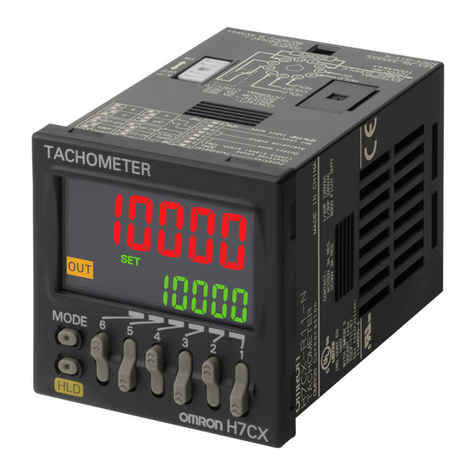
Omron
Omron H7CX-R11-N instruction manual
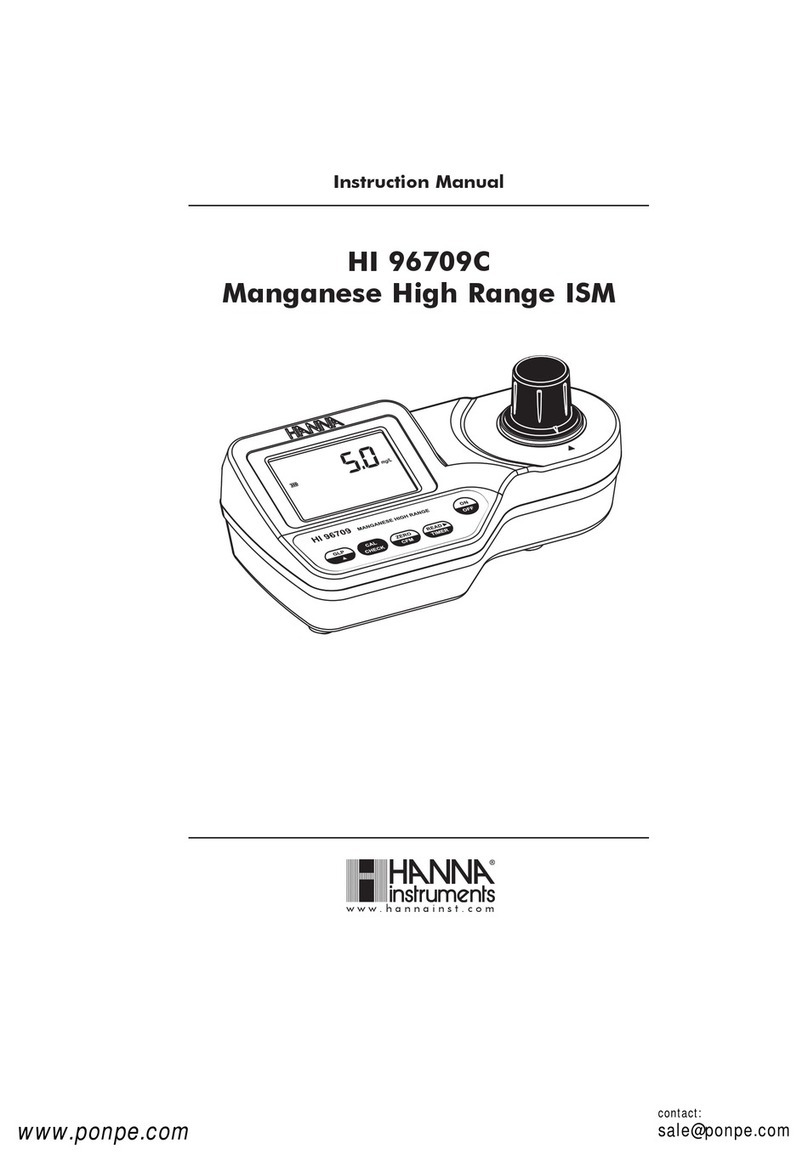
Hanna Instruments
Hanna Instruments HI96709C instruction manual
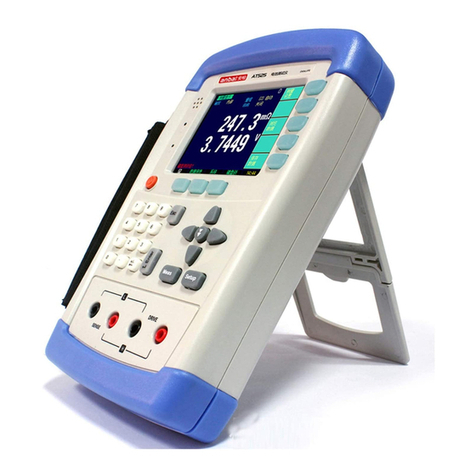
Applent Instruments
Applent Instruments AT525 user guide
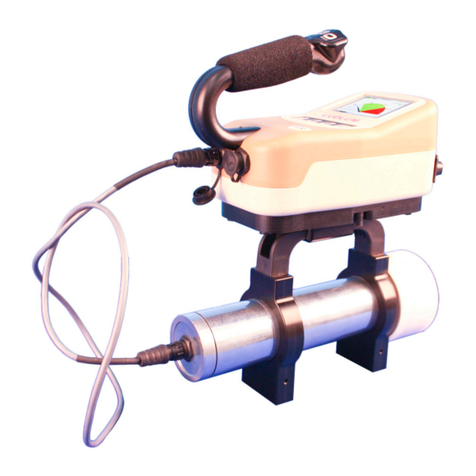
Ludlum Measurements
Ludlum Measurements 700e Series manual
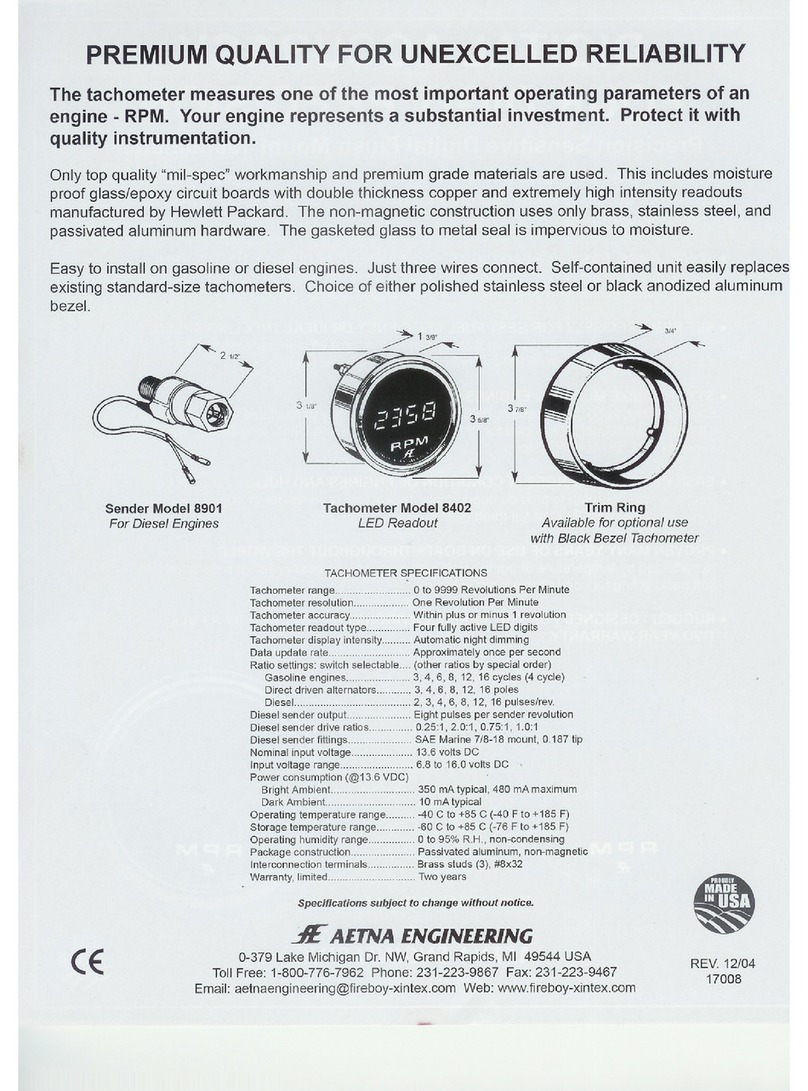
AETNA ENGINEERING
AETNA ENGINEERING 8402 Specifications
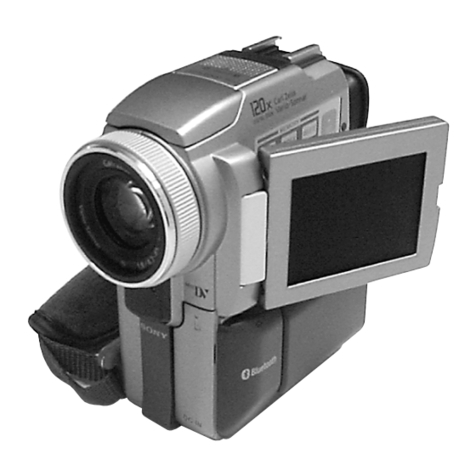
Sony
Sony DCR-PC115 Service manual


